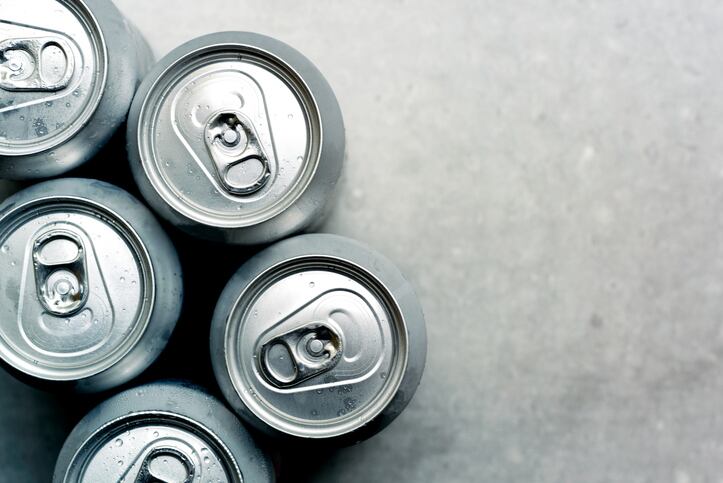Far more than its outer shell, drinks packaging is the bridge that connects a product with people. Standing out on the shelves and increasingly in digital shops is crucial to capture consumer interest, engagement and sales as well as achieve brand recognition. Ultimately, it is about stopping consumers from strolling or scrolling on by.
Consumer demands are evolving and packaging is subsequently changing to keep up with the fight to win market share in drinks categories. The humble can, which has traditionally been thought of as the home of sodas is now expanding to other drinks categories including functional beverages and beer.
“Cans have just gone through the roof,” says Richard Horwell, Managing Director, Brand Relations. “It is very difficult to even get a hold of them at the moment because everybody has gone cans."
Can Evolution: Providing a Recyclable Solution
Sustainability is a big shift behind drinks brands actively moving towards cans for their packaging. Statistics from the aluminum advocacy group The Aluminum Association estimate that 75% of the world's aluminum produced is still in use; promoting the material as 'infinitely recyclable'.
When it comes to beverage cans, "everybody sees that as being the best alternative," notes Horwell.
Plastic pollution is a core concern for today’s consumers. Shoppers are shunning plastic packaging for more recyclable options. If plastic and recyclable options are sat on the shelf next to each other, the growing urgency around eradicating plastic pollution and contributing positively to sustainability drives decision-making and purchasing habits in favor of the more environmentally-friendly option.
However, while product packaging may be perceived as being recyclable, it may contain plastic. In cans though, plastic can be actively removed from inside to ensure its recyclability. “So cans have become really popular,” says Horwell.
Previously, the industry was using plastic sleeves to cover the outer packaging of the cans. Today, design innovation is reaching secondary packaging too, to increase the recyclability of the overall format offer and appeal to calls for sustainable action.
Healthy drink brands appear in cans
In the past, cans meant soda. That has changed, says Horwell.
“In the past, everybody assumed that cans were carbonated. Whereas a lot of drinks now are coming out in cans, and then using nitrogen to top them up to make sure the cans remain hard."
Carbonated drinks are now seeing functional drinks like cold brew coffees and live culture beverages joining them in cans. “It is not just the Coca-Cola market anymore—a lot of health drinks are coming out in cans now, and that is going to continue to grow,” emphasizes Horwell.
Cost-effective production packaging choice
Price is another factor contributing to the rise of cans in drinks packaging. Traditionally, cans have long been thought of as related to cheaper beverage options, with the most consumers would spend on a can amounting to £2 in the UK.
However, the price point consumers are willing to pay appears to be increasing, particularly with new methods of payment such as touch payment. “You can pay £2 or £3 for a can of a drink because it has got particularly good ingredients in it,” adds Horwell.
The cost of can production is also favorable. Whereas previously, industry production norms would require brands to print 150,000 cans, with the minimum fill for big companies standing at 75,000 or 100,000 cans, this is no longer the case. Small canning lines are possible, Horwell confirms: “We have got companies that will do a thousand litres.” Therefore, increasingly, more of the cans consumers see on the supermarket shelves are from small production runs.
With the use of labels on drinks packaging, there are far more design possibilities that reflect consumers’ needs to see and access eco-conscious and interesting brands that also stand out. With low production run requirements, brands can create a small run of plain cans and then put labels on them. Novel and unique styles and techniques are all possible, from sensorial effects and gloss and matte looks to glitter. “You can have whatever you want on these labels. So we are getting some quite exciting stuff coming out now,” Horwell added.

